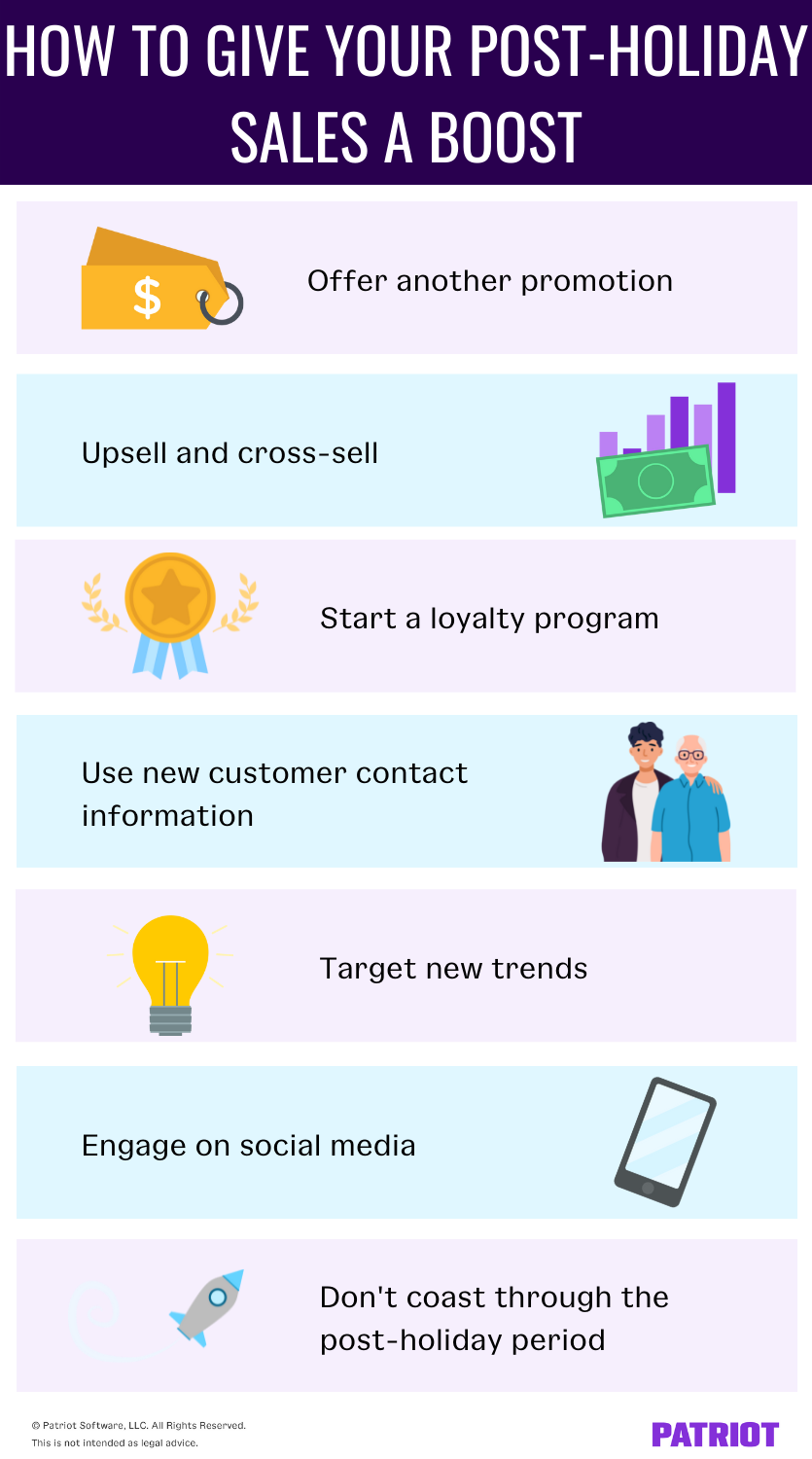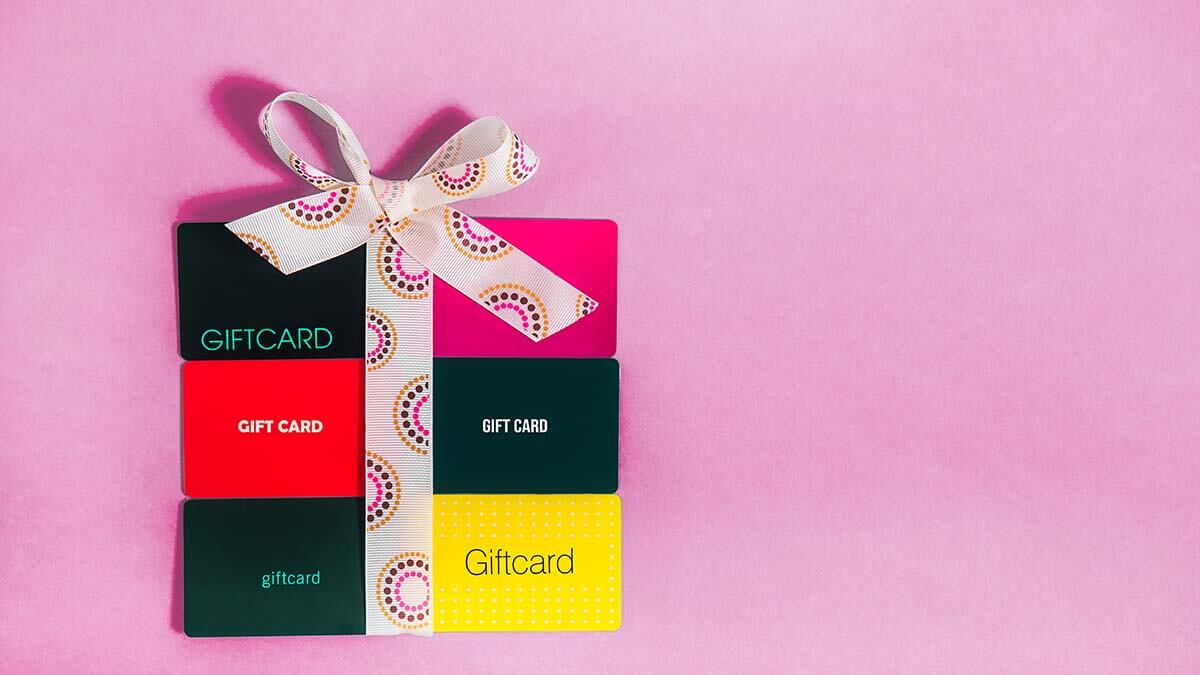For many businesses, the hustle and bustle of holiday shopping has come to a close. You’ve probably noticed a decrease in customer sales and an increase in returns and exchanges. But fear not. This just means that it’s time to give your post-holiday sales some love.
With the right promotions, marketing tactics, and pricing strategies, you can change your after-holiday sales from “blah” to “wow.”
Ready to give your post-holiday sales numbers a makeover this year?
How to give your post-holiday sales a boost
It’s normal to have a dip in sales after the holiday season. But that doesn’t mean you can’t try to pick up the pace and keep the ball rolling after.
Use these seven post-holiday sales tips to get back in business after the holidays.

1. Get consumers back through the door with another promotion
Black Friday, Small Business Saturday, and Cyber Monday aren’t the only times for great deals. You can entice customers to buy from you after the holiday shopping season comes to an end by coming up with some after-Christmas deals.
Promotions can help you increase your post-holiday sales numbers and get rid of some outdated inventory. You might consider offering deals like:
- Buy-one-get-one free
- Freebies with purchases
- Percentages off items or purchases
Promote your post-holiday sales event on your website, on social media pages, and in email campaigns. And, you can hand out coupons for upcoming after-holiday sales when customers purchase from you during the holiday shopping season.
2. Upsell and cross-sell based on holiday sales
During the holidays, your customers likely made a number of purchases, both for themselves and others. And hopefully, you have a clear record of those sales.
Why not use that data as a baseline for cross-selling and upselling other products or services to said customers?
Consider cross-selling if there are related products or services you can market to the customer that complement their purchase. You may consider upselling if you have a new-and-improved version of something they already bought.
Of course, it’s a little more involved to upsell and cross-sell after the customer has made the purchase. You have to do a bit of marketing footwork to make it work (e.g., send tailored emails).
3. Start a loyalty program and offer limited-time incentives
A small business loyalty program can give your bottom line a boost year-round. But, you can especially promote it after the holidays by offering limited-time incentives.
First, let’s take a step back and recap what are customer loyalty programs. A loyalty program rewards customers when they make repeat purchases from a business. For example, a customer might get a free drink when they buy a certain number of coffees.
To incentivize customers after the holidays, you might double the loyalty program points or rewards they can receive.
4. Use new customer contact information to your advantage
Did you collect names and email addresses from customers over the holidays? Be sure that information doesn’t go to waste.
Whether you have a digital or physical list of all your customers’ contact information, reference it. Send follow-up emails about their purchases, promote upcoming sales, and announce newly released products.
Don’t shut away your contact list in a drawer. Take advantage of it by marketing to your customers and keeping in touch after the holidays are over.
5. Target new year trends, not last year’s holidays
The marketing efforts for the holiday shopping season do a good job enticing customers to buy for their loved ones. When the season is over, you may want to change up your marketing strategies, too.
Rather than marketing to customers shopping for gifts, try marketing to new year’s trends, like healthy eating and exercising, spring cleaning, and upcoming events (e.g., Valentine’s Day).
The new year is a time to move forward, right? So, be sure to capitalize on that mentality when marketing to customers and implementing new deals.
6. Engage with your customers on social media
Did your customers post pictures of your products on their social media pages? Or, did you post pictures from a Small Business Saturday event you hosted?
If the answers to either of these is yes, you’ve got a prime excuse to keep the conversation going after the holidays are said and done.
Leaving a comment on a customer’s post like, “Thank you for making us part of your holiday shopping experience!” or “So happy your mom loved the book!” can ignite a conversation between you and the customer and their followers.
But why stop there? Post engaging status updates on your business social media pages to keep the conversation going, too. That way, you can stay at the forefront of your customers’ minds, even when the holiday shopping buzz wears off.
7. Don’t coast through the post-holiday time period
Although it’s only normal for sales to be a little slower after the holidays, try not to use it as a time to coast. You and your employees should aim for the same standards you set during the rest of the year.
Record every transaction in your accounting books, keep detailed records of any discounts you offer, and track your efforts.
Try not to get discouraged if your monthly small business revenue is lower than in previous months. Keep testing new sales tactics and marketing efforts to try to get out of the post-Christmas sales slump.
Want to see how your post-holiday sales compare to your holiday sales? With Patriot’s online accounting software, generating reports about your financial health is easy. Start your free trial now!
This is not intended as legal advice; for more information, please click here.



